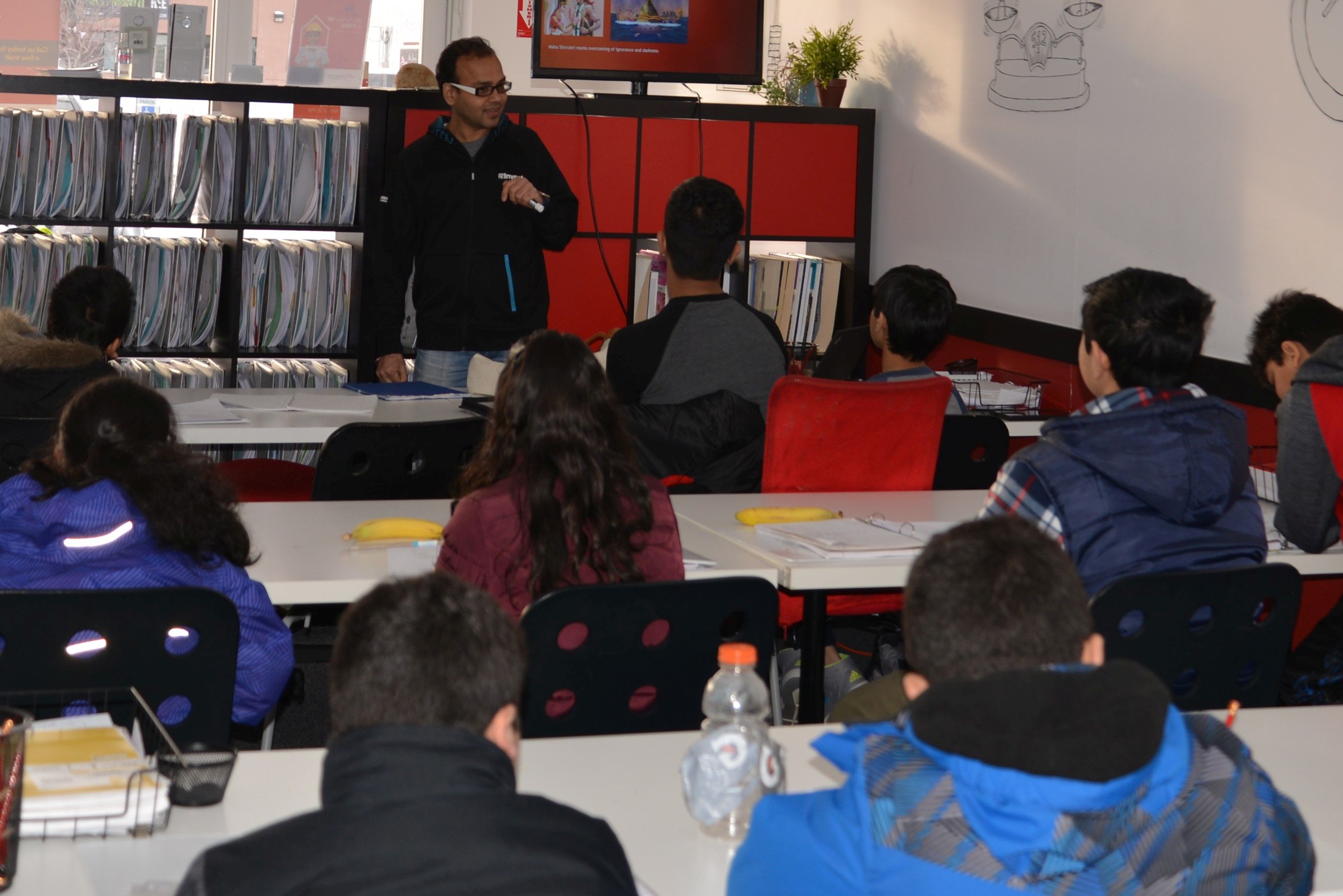
CHICAGO: On a cold Sunday afternoon in Naperville, a Chicago suburb, 30 Indian American students pay close attention while the teacher explains the battle on the tenth day of the Kurukshetra war in which Bhismapitama is grievously wounded by Arjuna’s arrows.
The commander in chief of the Kaurava army did not die, because of a boon that he had to will his soul to leave his body for death to come to him.
The kids, aged four and half years to 14, listen spell bound as the teacher, Ajay Jain, narrates the story illustrating it with slides. Then he asks the students what qualities of Bhismapitama they could emulate. One tiny hand after another goes up. “Loyalty to the motherland, a warrior who kept his promise no matter what the cost, exemplary courage” were the responses.
Some students want the epic to be translated into a modern context. Was the Brahmaastra more powerful than today’s nuclear weapons, one student wants to know.
The students – many of them born in the United States are participating in a Hindi Gurukul class, run by Ajay Jain and Kunjal Harshavat, both MBAs from the University of Chicago’s business school.
Both Ajay and Kunjal have been teaching students Hindi since 2008, earlier in association with local temples. Recently they established the Gurukul to include the teaching of Hindi, Indian culture, in addition to yoga and meditation, to school students.
Despite the bitter cold, the Gurukul attracts enthusiastic students and parents, with only the occasional snowstorm disrupting attendance. The class begins with a ‘savdhaan’ (attention) from the teacher followed by prayers in Hindi. On Indian festival days, a student is called on to explain the meaning and significance of events like Maha Shivratri, Makar Sakranti etc.
The teachers invoke technology to make things easier. Homework, phonetic lessons and grading are done using Google Classroom.
Mamta Garg, another teacher, puts the students through the basic yoga postures and breathing exercises, explaining that yoga would help them concentrate on their studies and help them remain serene in the face of stress.
Recent studies have shown high levels of stress among school students facing the burden of studies and peer pressure.A recent Naperville study showed that seventh graders cited “fitting in and having the approval and acceptance of peers” as the top stress factor.
Faced with the prospect of defending their religion and culture, what the Gurukul does is to give these students a sense of pride and community in their origin. When explained the significance of events in the Mahabharata and Ramayana, what would otherwise have appeared a mere ritual, takes on a new and deeper significance.

One can see this rising awareness among the students who appear eager to learn about the ancient Hindu mythology, and more important, how its lessons can be imbued into their daily lives.
Ajay and Kunjal spend a considerable time devising the curriculum. “I do not expect the students to have any grounding in the language when they come here,” says Ajay. His personal experience has helped him shape the curriculum. When he visited the Jain temple here, he found that his young son did not understand the slokas. So, he explains the prayers in class, with the pronunciations in Roman text and the meanings in English.
Ajay’s ambition is to see that the Gurkul eventually grow to have nine levels of classes from elementary to intermediate and advanced. “The kids are very smart,” says Ajay, “they pick up very quickly.”
What motivates two busy professionals to devote so much time to community service? “In our MBA class, one of the lessons is to create an impact. We are impacting the next generation because this is the age when they easily assimilate values,” says Kunjal.
Eventually, Kunjal hopes that the study of Hindi would be counted towards school credit along with foreign languages like Spanish and French.
Ajay grew up in a middle class family in India. For him, it is also about a contribution to the land of his birth, and an implied tribute to his mother, whose discipline still inspires him. “Even today, she gets up at 4 am,” he says, “and I too do it now because it gives me a few extra hours of solitude to devise and plan the Gurukul curriculum.”
Ashok Nair







